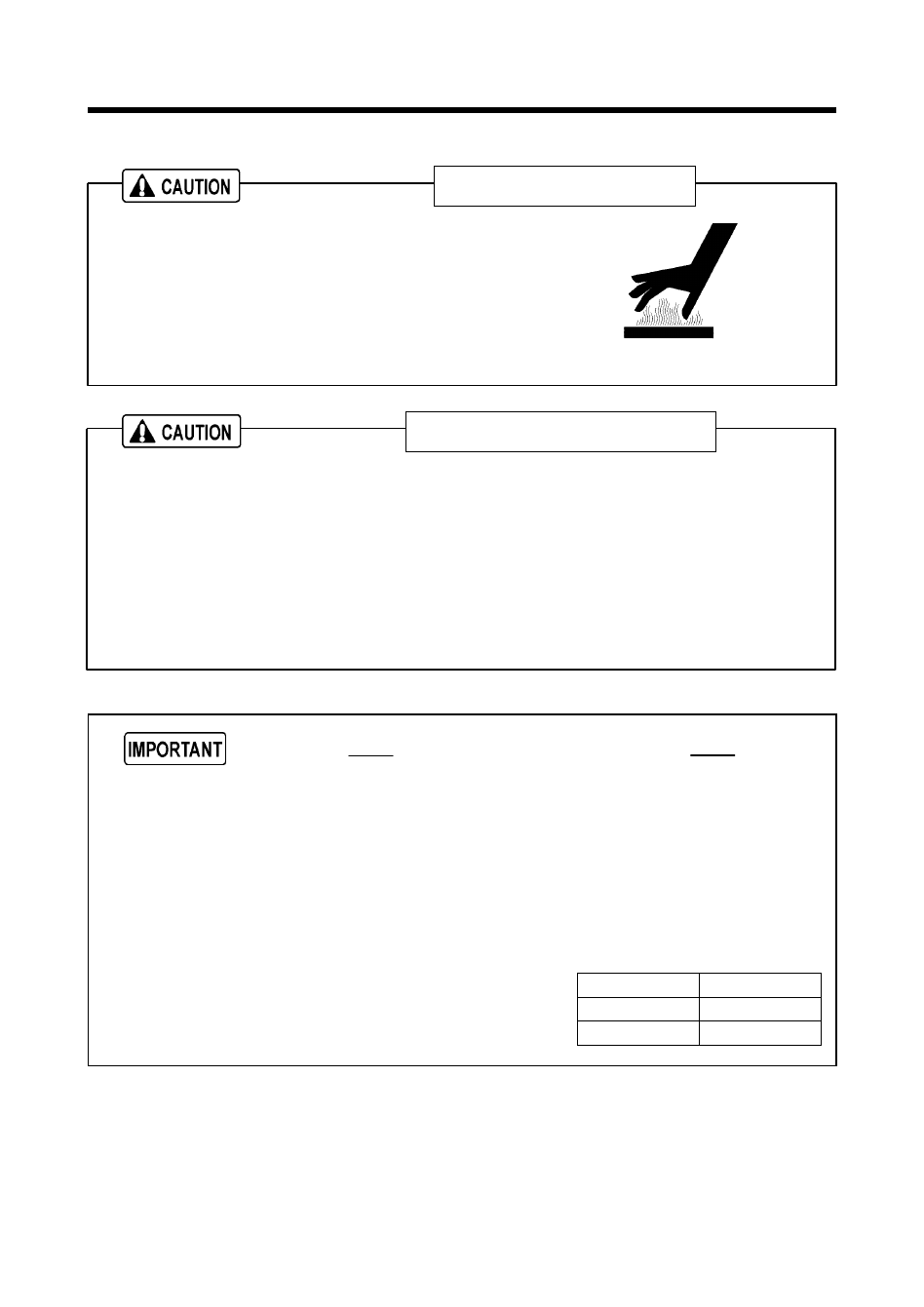Periodic inspection/maintenance – MMD Equipment 400S-6B1 User Manual
Page 40

5. Periodic Inspection/Maintenance
5-10
5.6.13 Change Coolant
Taking off the radiator cap
Be sure to stop the machine and allow time to cool. Then loosen
the radiator cap one notch. After the coolant water is sufficiently
cooled and the inner pressure is released, take the cap off.
If this procedure is neglected, the inner pressure can blow off
the cap. Steam jetting out of the radiator could result in causing
scalding. Follow this procedure under all circumstances.
H990432
How to handle LLC (Antifreeze)
LLC (Antifreeze) is a toxic material.
When a person has drunk LLC (Antifreeze) by accident, make him vomit and see a doctor
immediately.
When a person gets LLC (Antifreeze) in his eyes, wash the eyes with clean running water and
make him see a doctor immediately.
When LLC (Antifreeze) is stored, put it in a container with an indication saying “LLC (Antifreeze)
inside” and seal it up, then keep it in a place away from children.
Beware of flames.
Follow the designated regulations to dispose of LLC (Antifreeze).
Quality of coolant and antifreeze
Use soft water of good quality such as tap water for coolant.
When water with dirt, sand, and/or dust contained, or hard water such as well water (ground water) is
used, this will cause deposits inside radiator or on cylinder head, and will cause engine overheat due to
poor flow of coolant.
When replacing coolant, be sure to install a coolant filter and add coolant.
When the unit is used in a cold region and possible freezing is expected, it is recommended to use LLC
(Antifreeze) for the coolant.
Adjust mixing ratio of LLC (Antifreeze) with water according to
the temperature.
Use LLC (Antifreeze) within the range of its mixing ratio
between 35 and 60%.
If LLC (Antifreeze) in the water exceeds more than 60%, it
may decrease its antifreezing effect.
Reference of LLC (Antifreeze)
mixing ratio
Temperature Mixing
ratio
–4°F (–20°C)
35%
–40°F (–40°C)
55%